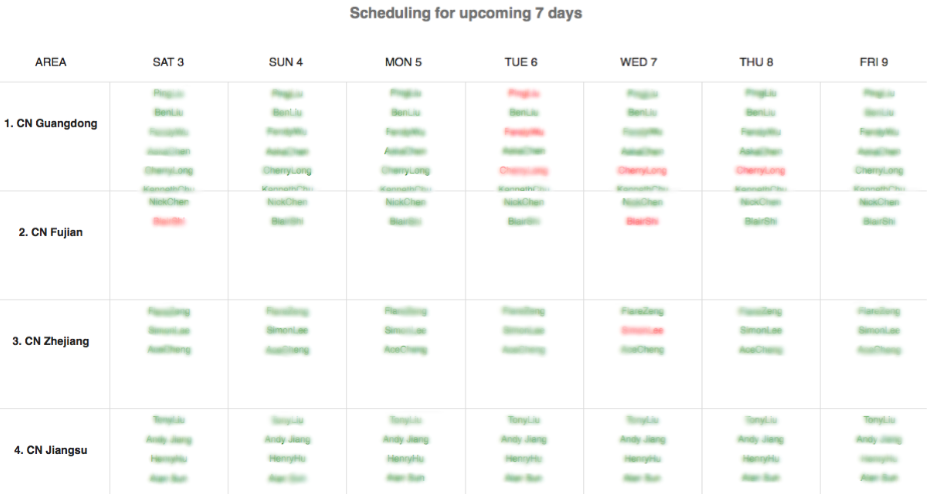 This is the sixth part in the series about the management of QC inspectors in China.
This is the sixth part in the series about the management of QC inspectors in China.
In my last article on this topic, I mentioned the need to have system to manage the planning. Some companies let factories and inspectors set the planning freely among themselves, and I think that’s a big mistake.
Here is the advice I usually give buying offices.
1. Manage the planning in the office
An assistant manager should set the planning. Suppliers should send an application (for example every Thursday for the following week) and that assistant manager should paste all the info in one file.
Some specialized software can help, but the main working tool here is a followup table with some/all of the columns listed below:
- Planned inspection date
- Original planned inspection date by supplier
- Latest allowed date (or ex-factory date, or ETD)
- Type of inspection (in-process / final / …)
- Product name and SKU number
- Purchase order number
- Number of man-days of work [to be input by the buyer’s technical team]
- Supplier name / number
- Factory province & city
If you use Excel, you can use different color codes to indicate what fields (for example the date) are confirmed vs. pending.
The main purpose is to avoid rush jobs. Chinese factory managers tend to think “ex-factory date is Friday night, so let’s get the inspectors in on Friday afternoon… and let’s tell them on Friday morning”.
They don’t think of the workload (maybe the inspector has 3 days of work). In fact they often purposefully try to cut the time allotted to inspections, and hope the QC job will be more superficial 00 which means that fewer issues will be found.
So it is up to your team to reschedule some jobs and to spread inspections over several days when necessary. Then it is the manufacturer’s responsibility to ensure production is ready on time.
2. Optimizing the allocation of inspectors
There are two objectives your team should try to achieve:
- Rotate inspectors among factories, to ensure nobody gets too “comfortable” or too “friendly”.
- Level the workload among your team to avoid having some employees in the field 28 days in a month and others busy for only 8 days.
Ideally you would have a view of who is busy and who is assigned to a job, for each geographical area. Here is way we show it in SynControl (our IT system for inspections).
(We blurred out the names for confidentiality. Names in green indicate available inspectors, and red means they are already assigned to a job.)
3. The controversial topic of penalties
This is an issue that differs company to company, and there are no “best practices” that I know of.
As I wrote before, I am not a very big fan of getting suppliers to pay penalties. But I have noticed that small fines (to the tune of 100 USD) are effective in one way — they force the factory employee in charge of the QC booking process to pay more attention to the rules. In Chinese companies the employer often threatens its staff to deduct the cost of mistakes from salaries, and sometimes they do it!
Let’s look at two different situations:
- If a supplier genuinely wants to respect your conditions but their internal organization is a mess and they can’t plan ahead, the best is probably to help them improve their production planning system (consultants can help). A well designed whiteboard in the main workshops, coupled with daily meetings run by supervisors who received related training, is a simple first step that can work miracles.
- However, when a supplier just won’t cooperate and keeps playing games, you should look at the arsenal at your disposal — from small penalties… to a heated meeting in your general manager’s office and possibly the loss of some business.
—
What do you think?

